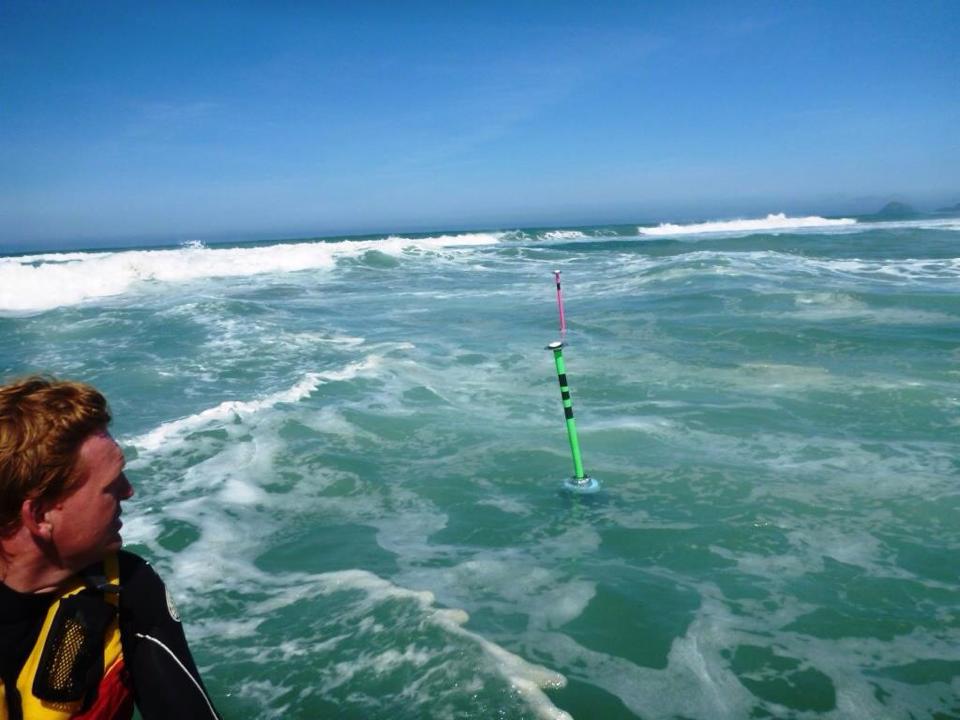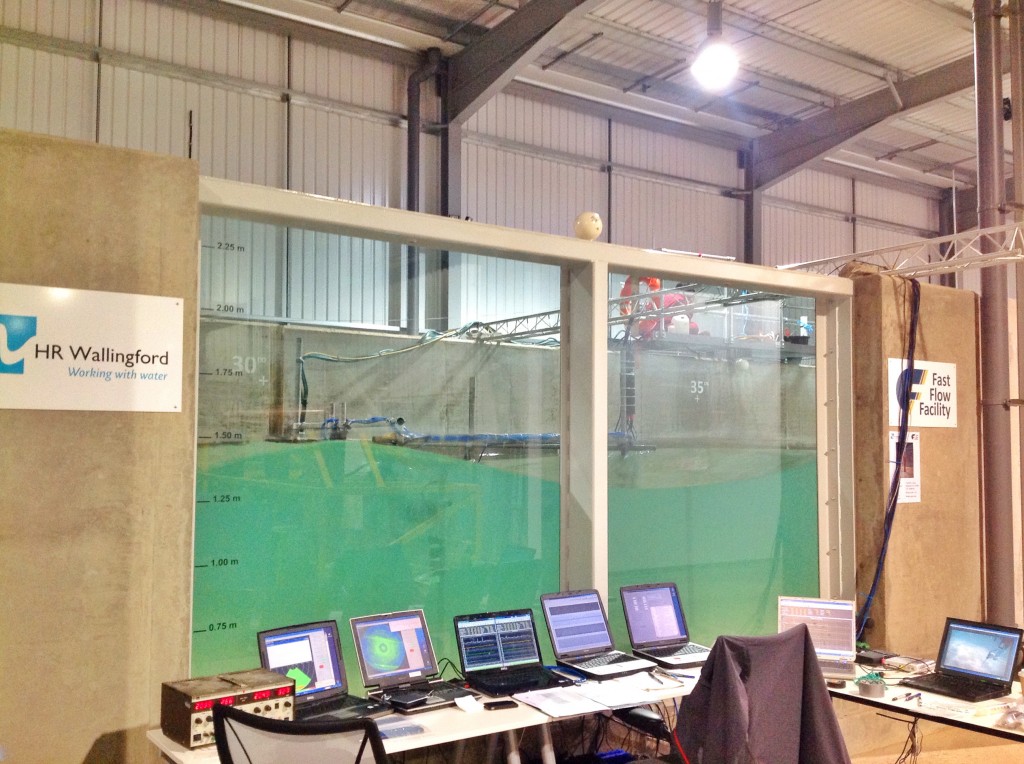Effects of Posidonia oceanica on sediment transport: implications for the protection of shorelines
Investigating the effects of natural shallow Posidonia oceanica meadows on wave induced flows and sediment dynamics, and the implications for coastal protection.
Key Contact: Prof Carl Amos
The role of seagrass, Zostera noltii on sand transport in an intertidal flat.

Seagrass meadows are capable of attenuating waves and currents, therefore alter the sediment dynamics and create stable beaches. Such meadowsprovide a sustainable natural defence to promote sediment retention and maintain the shoreline. This study combines field measurements and laboratory experiments to improve the understanding of sand mobilisation and flow dynamics in a Zostera noltii meadow, located in the intertidal flats of Ryde, northeast of the Isle of Wight. The threshold of motion of sediment and effects of the vegetation on flow is studied in a recirculating long flume using mimics.
Key Contact: Anas Annuar (PhD Student), Prof Carl Amos, Prof Steve Hawkins

Great Barrier Reef: How reef morphology and sea level affects wave transmission
The magnitude and variability of the reduction in wave height and energy across reefs has implications for sediment transport, coastal engineering, and the flushing of reef-lagoons. Offshore reefs, such as the Great Barrier Reef (GBR), consist of a ‘reef matrix’ of individual reefs which can be described through the porosity of the reef matrix, and which can affect wave attenuation. This study uses satellite altimetry to gain new insights into wave attenuation over the Great Barrier Reef.
Key Contact: Dr Shari Gallop
Impact of aquaculture on the British Columbian coastal zone
The Aquaculture Collaborative Research and Development Program (ACRDP) is a Fisheries and Oceans Canada (DFO) initiative to increase the level of collaborative research and development activity between the aquaculture industry and the department.
Key Contact: Prof Carl Amos
Impacts of W class ferries on saltmarsh erosion
The Lymington estuary has suffered considerable losses of habitat (salt marsh) and intertidal flats over the last 30 years. This study aims to asses whether new, larger, W class ferries are contributing to increased habitat loss.
Key Contact: Prof Carl Amos
The influence of reefs on coastal oceanography, erosion and recovery
Investigating the mechanisms through which natural rock and coral reefs interact with waves, currents, sediment transport and morphology at Yanchep Lagoon in southwestern Australia.
Key Contact: Dr Shari Gallop
Rips and risk: An investigation of the hazard signature
 Rip currents are jet-like flows originating in the surfzone before broadening outside the breaking region. They are an integral part of nearshore circulation on wave-dominated beaches and cause up to 68% of surf-related incidents reported by the Royal National Lifeboat Institute (RNLI) in the UK. This study aims to develop an automated algorithm capable of delineating various rip channel morphologies in images from multiple sites and to further classify the hazard signature of differing rip channel morphologies.
Rip currents are jet-like flows originating in the surfzone before broadening outside the breaking region. They are an integral part of nearshore circulation on wave-dominated beaches and cause up to 68% of surf-related incidents reported by the Royal National Lifeboat Institute (RNLI) in the UK. This study aims to develop an automated algorithm capable of delineating various rip channel morphologies in images from multiple sites and to further classify the hazard signature of differing rip channel morphologies.
Key Contact: Seb Pitman (PhD Student), Shari Gallop
Sediment transport pathways offshore between Poole and Christchurch Bays
The coast between Bournemouth and Milford-on-Sea is densely populated, and millions of pounds have been spent replenishing beach sediment at Bournemouth. It is estimated that Bournemouth beach loses about 70,000 m3 per year from the replenished frontage (Harlow, 2012). Data from the Channel Coastal Observatory (CCO) and Standing Conference on Problems Associated with the Coastline (SCOPAC) will be used to investigate several regional questions regarding the source, storage and destination of sediment along this portion of the south coast.
Key Contact: Dr Shari Gallop
Sediment-water column exchange of nutrients in coastal and shelf-sea waters
Understanding the effects of resuspension and pore-water advection on sediment water-column nutrient and carbon exchange using novel in-situ, ship-board and laboratory experiments.
Key Contact: Dr Charlie Thompson
Surge Watch: An interactive and multi-purpose database of coastal flooding events for the UK
The UK has a long history of coastal flooding, including the 1607 flood which caused the greatest loss of life from any sudden onset natural catastrophe in the UK during the last 500 years, and the storm of 1953 in which 307 people were killed and 24,000 people fled their homes. Today, more than 2.5 million properties and £150 billion of assets are potentially exposed to coastal flooding in the UK. This project aims to setup ‘Surge Watch’, a database with which to monitor surge events and collate data associated with them offering long-term benefits for safety and planning.
Key Contact: Dr Ivan Haigh (Physical Oceanography), Dr Shari Gallop
Tidal inlet stability on Urdaibai Estuary, Spain

Understanding the factors that govern the stability and closure of small tidal inlets in sandy settings.
Key Contact: Prof Carl Amos, Alanoud Alragum
In the context of climatic and sea-level change, it is imperative to investigate the vulnerability of coastal environments. This includes a better understanding of factors controlling the water quality and habitats of coastal areas, such as the Venice lagoon, that can then be used to direct management strategies and inform regulatory frameworks.
Key Contact: Prof Carl Amos, Dr Hachem Kassem
Vertical turbulence structures in the benthic boundary layer as related to suspended sediment
The suspension of sediment in turbulent flows is an extremely complex case of fluid- particle interaction, with profound implications for the accurately predicting the morphological evolution and bio-geochemistry of coastal and estuarine environments, and for coastal engineering applications.
The primary objective of this research is to present a turbulence-based model describing the interactions between coherent turbulent structures and suspended sediments under oscillatory flows. This will address some of the limitation of existing models, particularly particle-fluid interactions (beyond the passive scalar assumption), and eddy viscosity formulations.
Key Contacts: Dr Hachem Kassem, Dr Charlie Thompson, Prof Carl Amos
iCOASST – integrating coastal sediment systems
Using integrated modelling to facilitate the prediction of coastal change and the management of coastal erosion and flood risk, the iCOASST project brings together a number of UK universities, research laboratories and geological partners with leading engineering consultants, to develop new methods that will characterise and forecast decadal changes.
Key Contact: Dr Justin Dix
